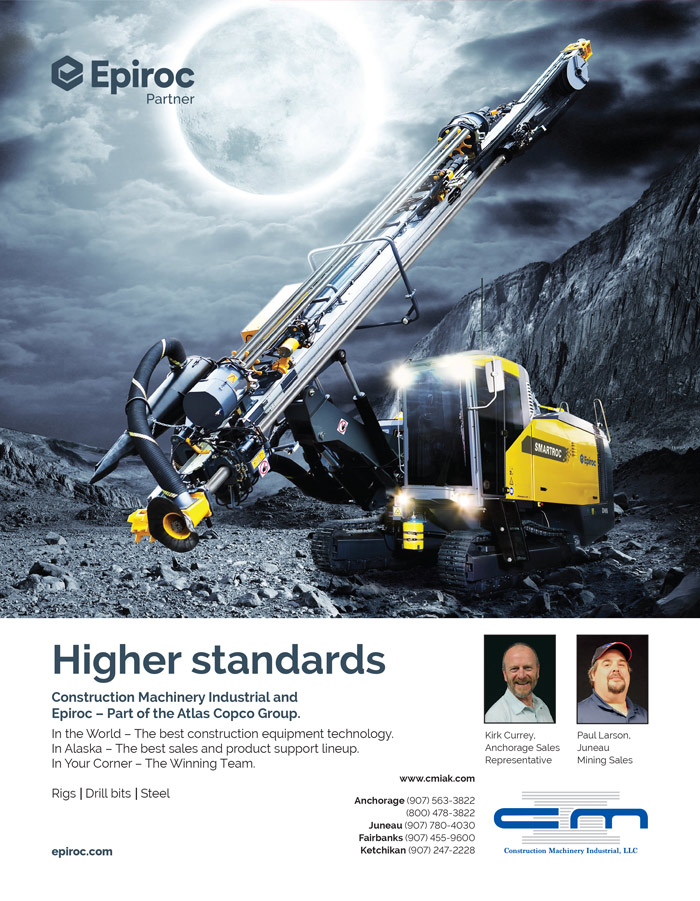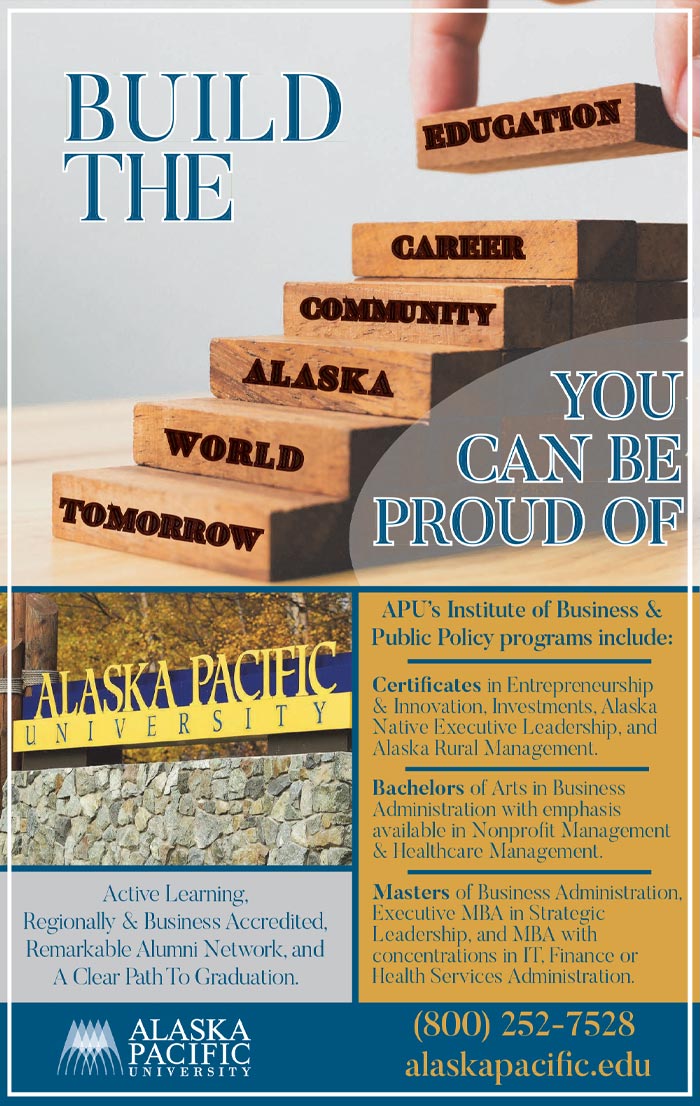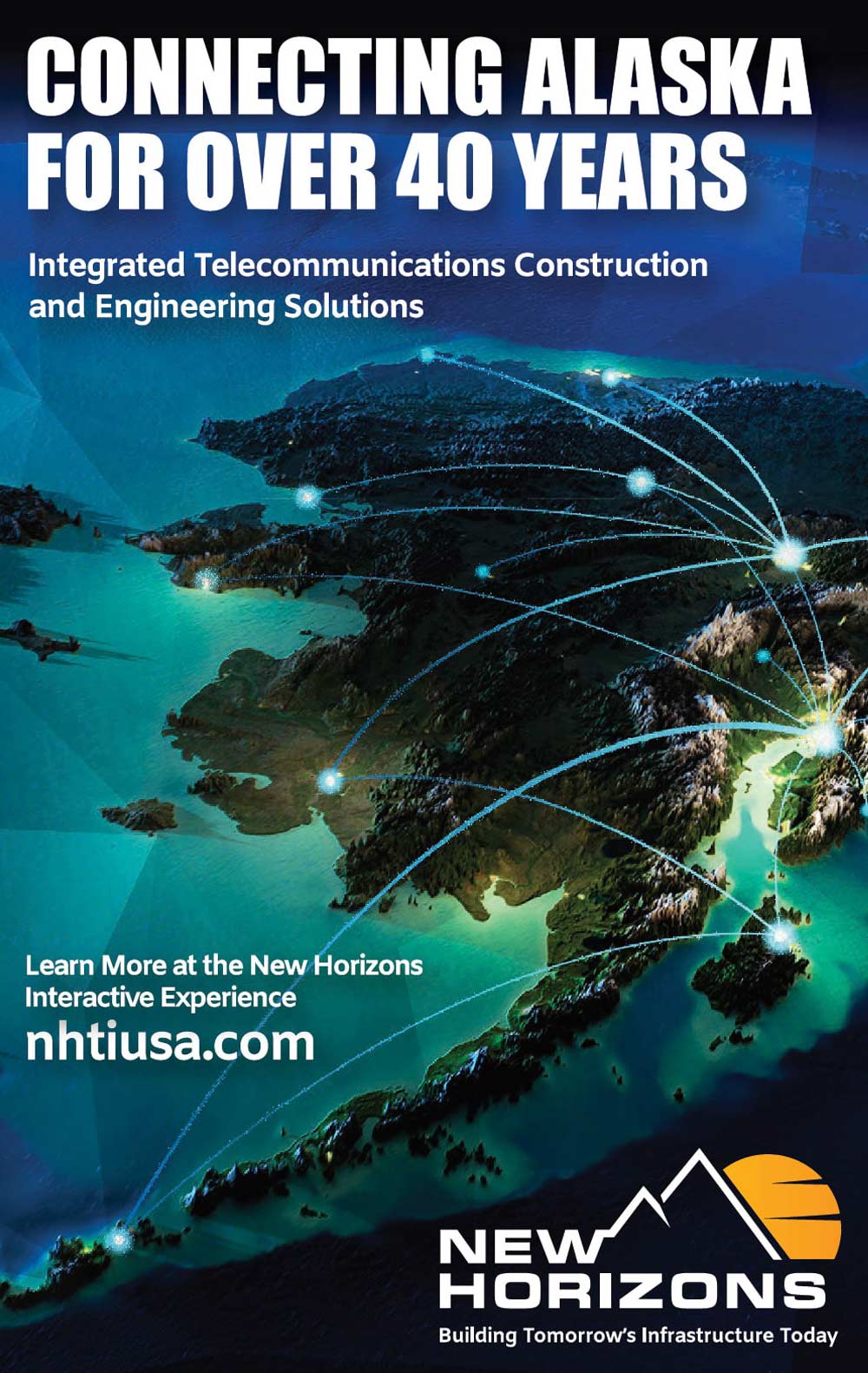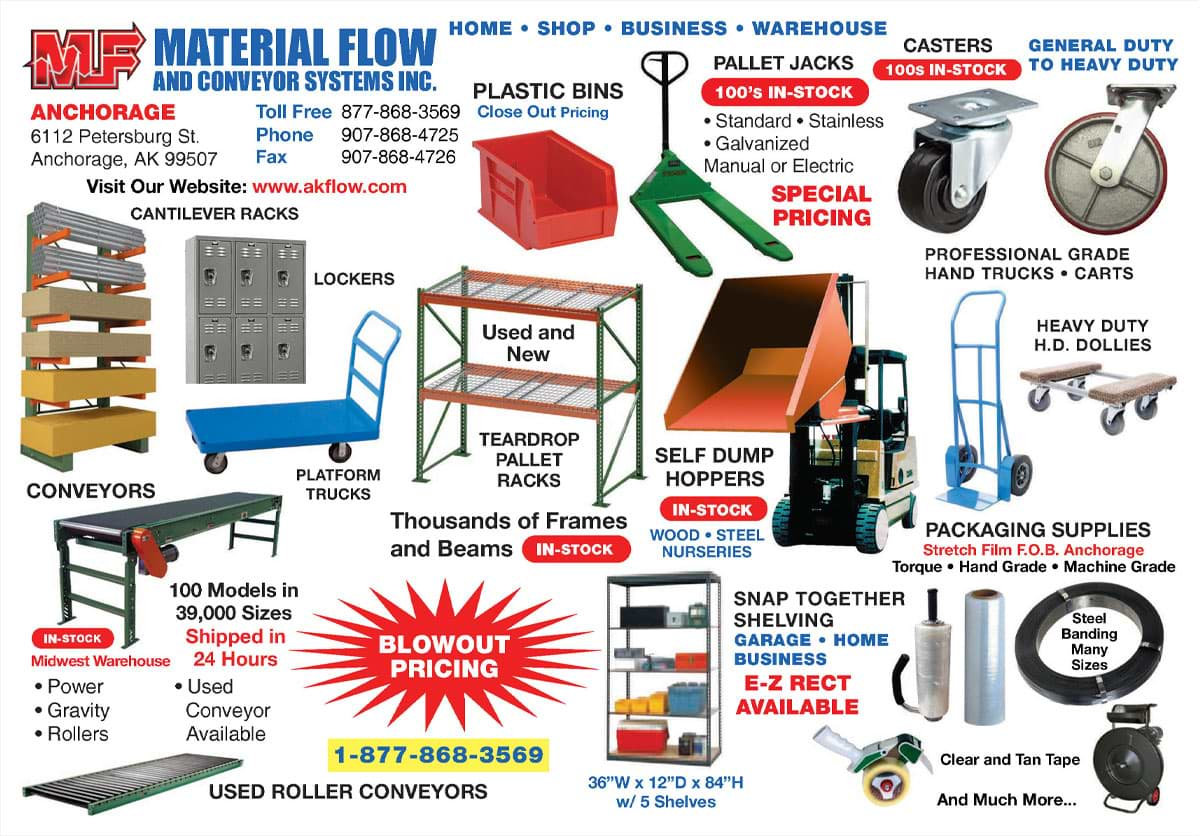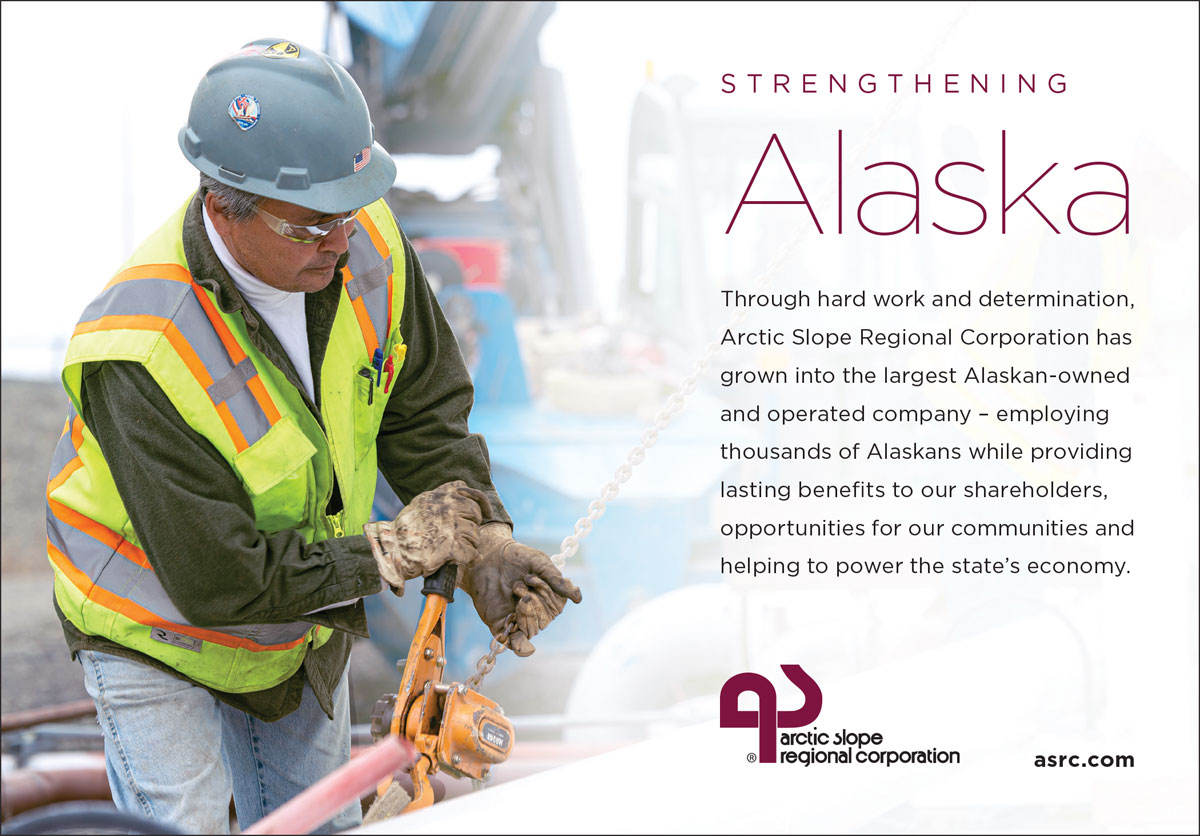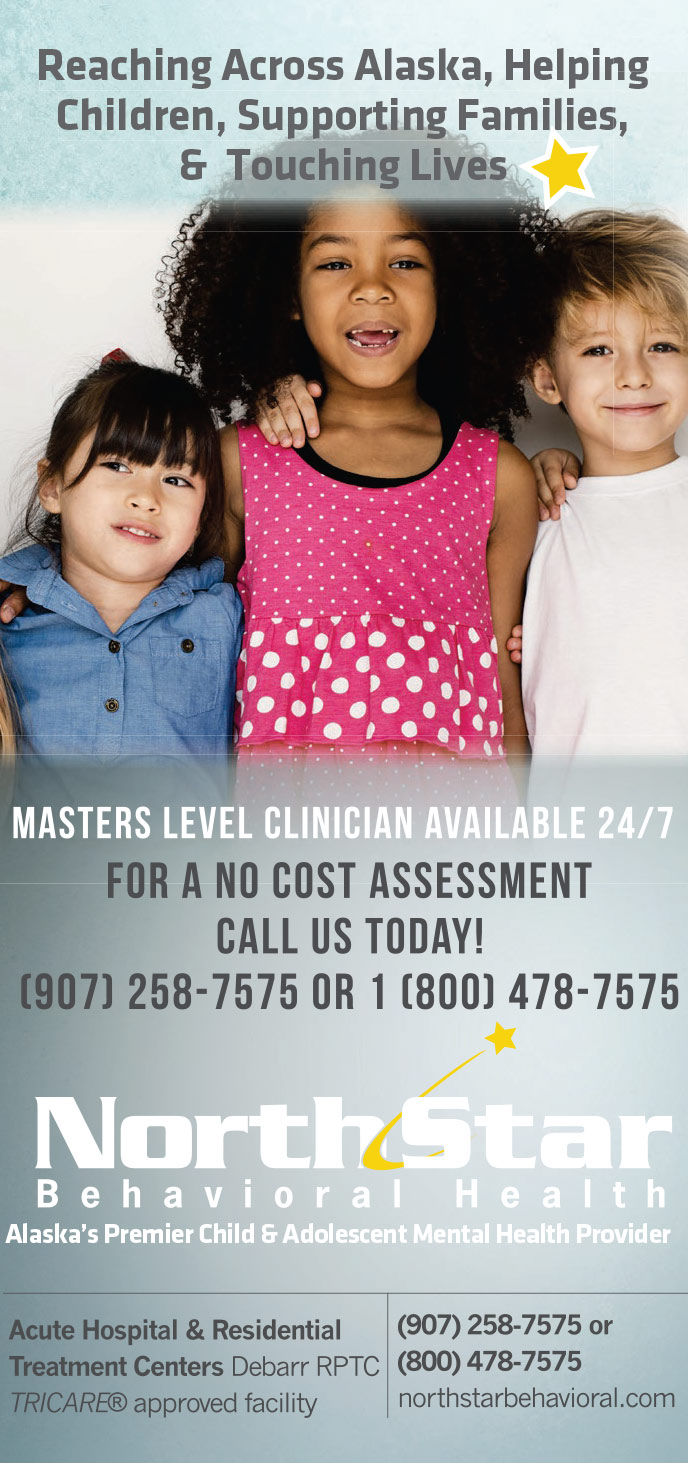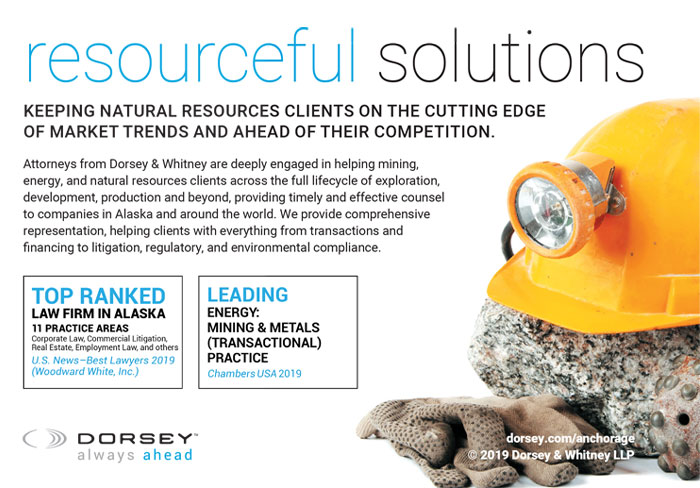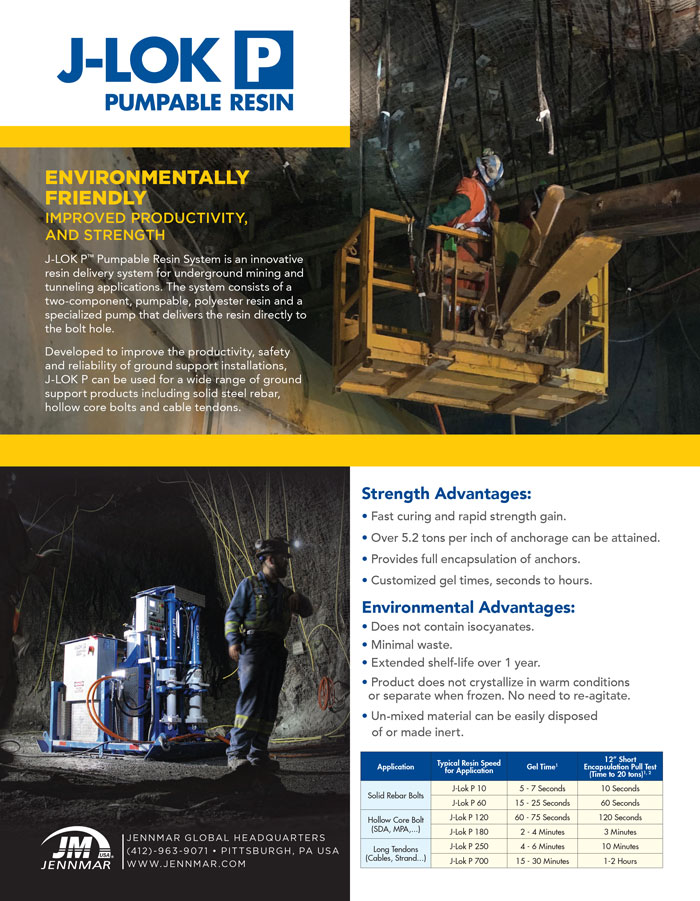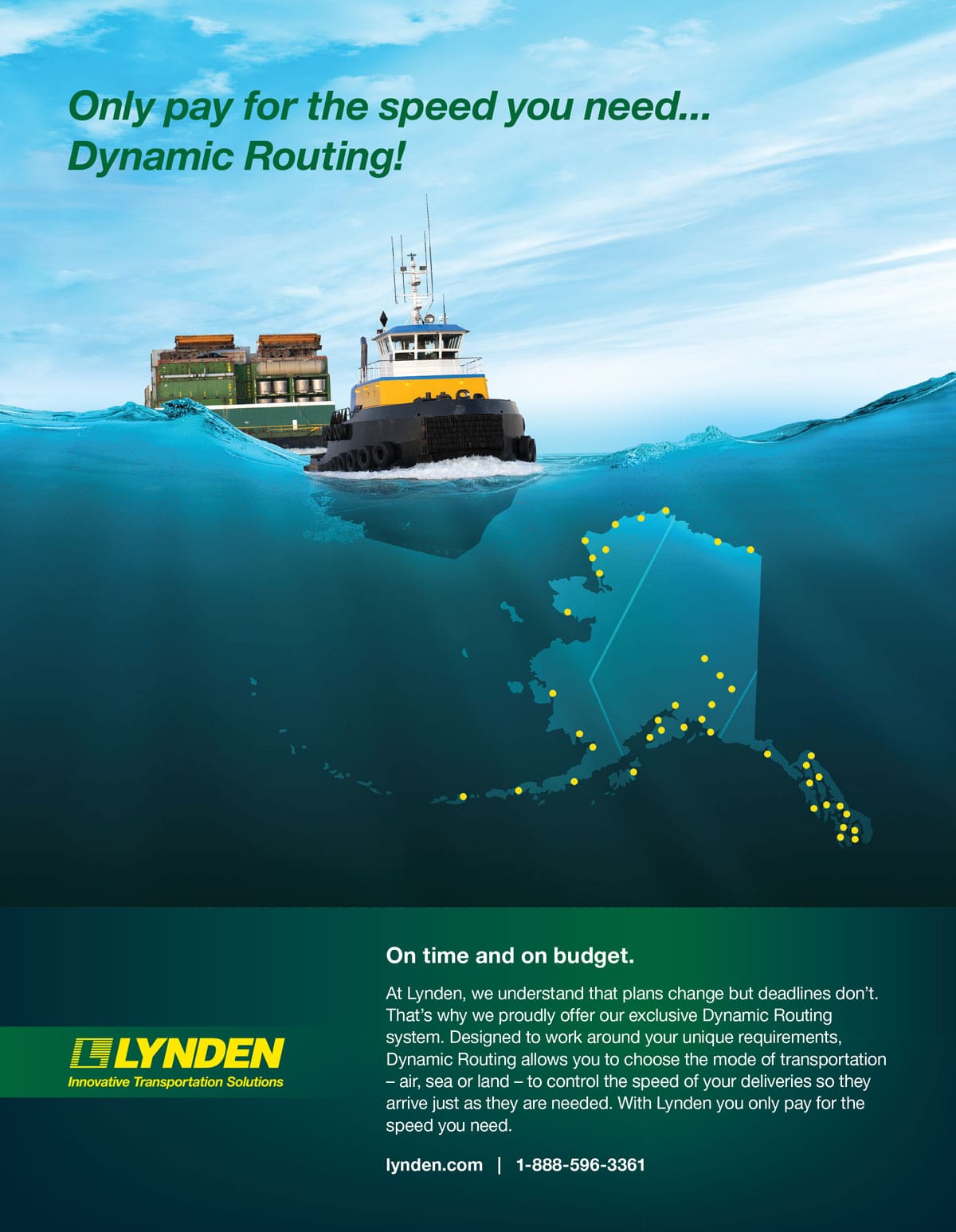Contents
Features
By Tracy Barbour
The Pulse of Cardiology in the Last Frontier
By Isaac Stone Simonelli
By Vanessa Orr
By Brad Joyal
Anticipated ANWR Lease Sale Profits Included in Trump 2021 Budget
By Isaac Stone Simonelli

The Electrification of Everything
By Amy Newman
More Boats, More People, More Money
By Tracy Barbour

The Electrification of Everything
By Amy Newman
By Tracy Barbour
The Pulse of Cardiology in the Last Frontier
By Isaac Stone Simonelli
By Vanessa Orr
By Brad Joyal
Anticipated ANWR Lease Sale Profits Included in Trump 2021 Budget
By Isaac Stone Simonelli

More Boats, More People, More Money
By Tracy Barbour

By Vanessa Orr
About The Cover

By Vanessa Orr

About The Cover
Quick Reads

Kerry Tasker
Billie Martin
press@akbizmag.com
Postmaster:
Send address changes to
Alaska Business
501 W. Northern Lights Blvd. #100
Anchorage, AK 99503
From the Editor

he Corporate 100 rankings are an annual tradition at Alaska Business that spans nearly three decades. There are a handful of companies that appeared on our inaugural Corporate 100 in 1993 and appear again on the list today including Alyeska Pipeline Service Co., Arctic Slope Regional Corporation, Bristol Bay Native Corporation, First National Bank Alaska, GCI, Lynden, NANA, Providence, and Usibelli Coal Mine to name a few of the companies that have been keeping Alaskans employed and feeding the economy, year after year, decade after decade.
Because the 100 companies in this directory employ workers in Alaska’s staple industries, it is not an overstatement to say that without them, the state’s economy would suffer deeply. Economists are once again predicting that the state is emerging (some say has emerged) from its years-long recession in 2020 and, if it does, it will be in large part thanks to the companies and employees on this list.

Medical
Education
t’s vital that medical providers stay current with recent developments and the latest threats in the healthcare field. Challenges like the coronavirus outbreak—which emerged in China in December and has since spread across the globe—require that medical professionals stay current on the latest prevention and treatment options available. This is pertinent to making decisions and providing care to the community while keeping providers and their staff safe by reducing transmission, according to Susan Gorba, medical educator for Providence Health & Services Alaska.
That’s where continuing medical education (CME) comes into play. CME allows healthcare professionals to maintain competence and learn about new and developing areas of their field. “By offering continuing medical education, we are bringing current information to our providers and helping them to remain current with their medical knowledge,” Gorba says.
Medical
Education
t’s vital that medical providers stay current with recent developments and the latest threats in the healthcare field. Challenges like the coronavirus outbreak—which emerged in China in December and has since spread across the globe—require that medical professionals stay current on the latest prevention and treatment options available. This is pertinent to making decisions and providing care to the community while keeping providers and their staff safe by reducing transmission, according to Susan Gorba, medical educator for Providence Health & Services Alaska.
That’s where continuing medical education (CME) comes into play. CME allows healthcare professionals to maintain competence and learn about new and developing areas of their field. “By offering continuing medical education, we are bringing current information to our providers and helping them to remain current with their medical knowledge,” Gorba says.

Last Frontier

Last Frontier
he “Gray Tsunami”—the aging population in Alaska—is driving increased demand for cardiological services, Alaska Heart & Vascular Institute CEO Robert Craig III says.
“Cardiology typically serves patients in an older age category. If we were to do a per capita need for cardiology services in the state, I could probably hire another twenty cardiologists and just meet the need of what this state alone has,” Craig says. “It’s continually evolving—for our state in particular, it’s a growing need for cardiology.”
Alaska Heart & Vascular Institute, managed by Craig and a board of five physicians, comprises thirty-two cardiologists offering services from diagnostic testing and heart rhythm management to heart failure and interventional cardiology.
ttracting and retaining skilled employees is a challenge most Alaskan companies are facing in today’s job market. Record unemployment has made businesses need to get creative with their retention strategies. What if there was a way to increase employee engagement, raise morale and attract talent all at the same time? The answer is easy: institute a wellness initiative.
You’re probably asking yourself, Does it work?” “How can it benefit my business?” Over the past several years, the wellness industry has grown twice as fast as global economic growth, and has produced proven results of increasing employee engagement and retention, while reducing healthcare costs. It might seem unlikely that something as simple as a wellness program could have such substantial results, but the statistics show that an effective wellness program can have a drastic impact on your workplace culture and, of course, the bottom line.
Air:
The Joys of HVAC
t’s not a stretch to say that mechanical engineers breathe life into a building. While architects may conceptualize them and contractors may build them, without the efforts of the people who design and maintain their central systems—including the heating, ventilation, and air-conditioning (HVAC) systems—the spaces wouldn’t be habitable.
This is especially true in Alaska, where huge temperature variations can cause buildings to be too hot, too cold, or too dangerous to occupy. Add to this the fact that these systems have a myriad of challenges of their own—cost, size, capacity—and it’s no surprise that those who do the work have passion for the job.
ven the most experienced contractors can find building in Alaska’s environment complex and challenging. From finding the right project to bidding, hiring, and securing permits, construction projects require sharp choices and exhaustive attention to detail from start to finish.
very job counts, which is why Alaska Business celebrates the corporations in Alaska that keep people employed across the state every April in our Corporate 100 Special Section. The top five this year—Providence Health & Services Alaska; Trident Seafood Corporation; Princess Cruises, Holland America Line & Seabourn; Arctic Slope Regional Corporation (ASRC); and NANA—are representative of some of the brightest industries in Alaska’s economy.
harles R. Dillard, 79, really loves two things: railroads and Alaska. So the fact that he’s been able to combine the two by working at the Alaska Railroad for the past fifty years has been a dream come true.
“The US Army sent me to Alaska in 1961, and I saw the railroad here and decided that it would be my home,” says the carman/writer inspector, who has been employed by the railroad since July 12, 1965. “I don’t know what I’d do if I wasn’t doing this. This is all I’ve ever wanted.”
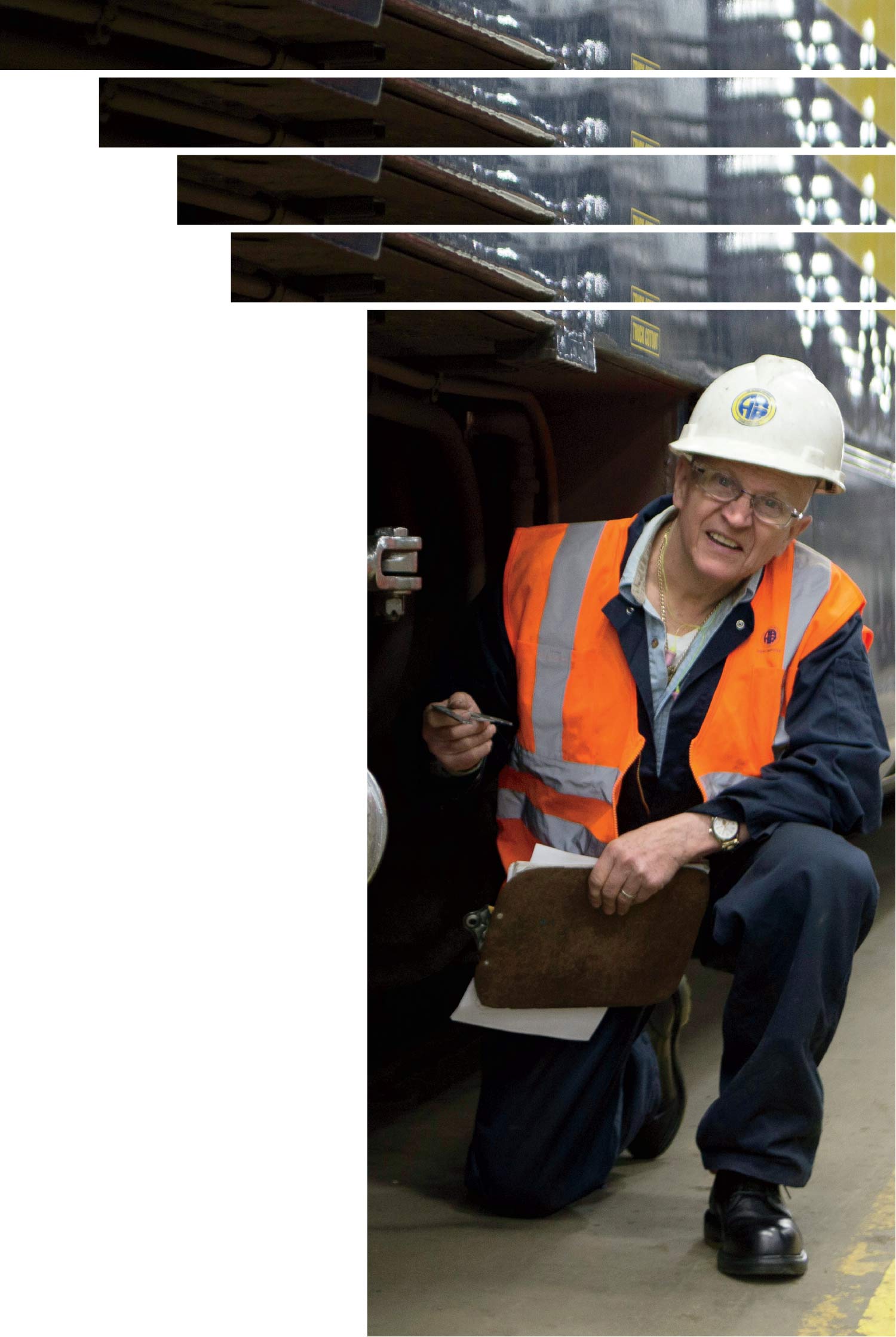
harles R. Dillard, 79, really loves two things: railroads and Alaska. So the fact that he’s been able to combine the two by working at the Alaska Railroad for the past fifty years has been a dream come true.
“The US Army sent me to Alaska in 1961, and I saw the railroad here and decided that it would be my home,” says the carman/writer inspector, who has been employed by the railroad since July 12, 1965. “I don’t know what I’d do if I wasn’t doing this. This is all I’ve ever wanted.”
Anchorage, AK 99508
Renton, WA USA
Employees (Worldwide)120,000Employees (AK)5,000
Anchorage, AK 99503
206-783-3818
Employees (Worldwide)8,881Employees (AK)4,602
Carrs|Safeway
he state’s newest Carrs|Safeway opened in mid-November 2019; while it remains located in the (newly rebranded) Midtown Mall in Anchorage, it moved from the west side of the mall to the east. The renovated space is bright, open, and features a full-service ramen bar, full-service poke bar, and Wok-UR-Way, in addition to a Kaladi Brothers location.
Carrs|Safeway Alaska General Manager Reino Bellio says that, against a nationwide trend of struggling retail brands, the company has long-term plans for operations in Alaska. “We have been here for a long time,” Bellio says.
In fact, back in 1915, a year before Anchorage’s founding and more than forty years before Alaska became a state, J.B. Gottstein was supplying groceries and other supplies to Alaskans. Larry Carr opened his first grocery location in 1950. By the mid ‘70s the two grocers merged to form, at the time, the state’s largest retail chain and further cemented their legacy. According to Carrs|Safeway, following that merger, “60 percent of the entire Alaskan population lived within three miles of a Carrs store.” In 1990 the company was purchased by an employee ownership group, and then it was acquired by Safeway in 1999, which was followed by its acquisition in 2014 that made Carrs|Safeway part of the Albertsons family of stores.
ecla’s Greens Creek Mine, located on Admiralty Island eighteen miles southwest of Juneau, is one of the largest silver mines in the world and the largest in the United States. In 2019 the underground mine processed 846,076 tons of ore to produce 9.9 million ounces of silver and more than 56,000 ounces of gold, 20,000 tons of lead, and 56,000 tons of zinc. According to the company, Greens Creek is a very low-cost silver mine and is the cash-generating engine for Hecla, which also has operating mines in Idaho; Nevada; Quebec, Canada; and Durango, Mexico.
According to Greens Creek’s General Manager and Hecla VP Brian Erickson, Greens Creek is also unique as it’s located within the Admiralty Island National Monument, the only US mine permitted to operate within a national monument. “That means our safety and environmental record must be among the best in the world right now,” Erickson says. “That’s a responsibility that we talk about every day, and we take it very seriously.”

t’s almost spring in the Last Frontier, which means across the state winter-based activities are winding down and exploration, drilling, and construction plans that require warm summer months are ramping up. Below Alaska Business has compiled 2019 updates and 2020 plans for Alaska’s operating metal mines, as well as a few future projects currently working on exploration or permitting.
In February Kinross published an update on its development projects, exploration program, and estimated mineral reserves and resources. Kinross owns and operates Fort Knox, an open pit gold mine in the Fairbanks mining district. According to the update, during 2019 a total of 7,300 meters of drilling was completed that mostly focused on the western crest of the pit. “The results were encouraging and resulted in the addition of 229 gold koz [thousand ounces] in measured and indicated resources,” the company states. For 2019, proven and probable reserves at Fort Knox are 2,910 gold koz, measured and indicated resources are 2,026 gold koz, and inferred resources are 774 gold koz. In 2019, Fort Knox produced 200,253 ounces of gold, a nearly 22 percent drop from 2018. However, it’s expected gold output will increase in 2020, largely due to the Gilmore expansion.
ancouver-based Graphite One is out to make history by creating the first graphite supply chain in the country, the company says. To accomplish its mission, it’s working to mine graphite from Graphite Creek outside of Nome, site of the highest grade and largest known large flake graphite deposit in the United States. Even so, Graphite One doesn’t consider itself a “typical” mining company.
“Graphite One isn’t really a mining company,” explains President and CEO Anthony Huston. “We’re a tech company that mines graphite.”
The corporation, which Huston founded in 2012, considers mining a means to an end, an endeavor necessary to achieve its goal of creating a US-based graphite supply chain.
ccording to state economists, Alaska’s most lucrative industries are oil, tourism, and fishing. Timber, agriculture, and mining also garner a good amount of state revenue. In the mining industry, coal, zinc, and silver extraction are big business, as is mining and refining gold.
In 2018, the US Geological Survey reported that domestic gold mine production was approximately 210 tons, valued at approximately $8.6 billion. Gold was produced in a dozen states in 2018, primarily at Alaska’s placer mines and in the western United States.

resident Donald Trump’s administration missed the target date of holding the first-ever oil drilling lease sale in Alaska’s Arctic National Wildlife Refuge in 2019 due to delays with the environmental review process. However, the administration’s $4.8 trillion proposed budget for 2021 includes $1.06 billion in anticipated revenue from the lease sale this year and $502 million in 2021.
“An ANWR 1002 lease sale is the first step in opening an opportunity to responsibly develop Alaska’s abundant oil and gas resources in an area that was specifically set aside for oil and gas development but has been held hostage administratively for many years,” Governor Mike Dunleavy says.
“ANWR 1002 leasing will provide local jobs, grow our private sector economy, and put more oil in the Trans Alaska Pipeline System [TAPS]. Additionally, this would result in putting dollars in our Permanent Fund and state and federal treasuries. We fully recognize the importance of this resource in the nation’s overall strategy of energy independence.”
Pull
ocal grocery and department stores have shelves lined with thousands of items, the great majority of which didn’t originate in Alaska. So where did those potato chips come from? What size was the barge that brought those vacuum cleaners here? How many bicycles came in the latest shipment?
While the general public may not spend much time pondering those questions, the reality of what it takes to bring goods to the state is truly a testament to Alaska’s robust tug and barge industry, which serves a critical role in the state’s commerce.
“We like to think that we’re kind of a shining star here, enabling commerce for a broader state,” says Michael O’Shea, senior business development director for Cook Inlet Tug & Barge. “If the maritime industry doesn’t work, the state’s wheels won’t turn. Without us, the truck drivers don’t work, the longshoremen don’t work. Think about it: the stuff doesn’t get on the shelves at Fred Meyer from cars.”
Pull
ocal grocery and department stores have shelves lined with thousands of items, the great majority of which didn’t originate in Alaska. So where did those potato chips come from? What size was the barge that brought those vacuum cleaners here? How many bicycles came in the latest shipment?
While the general public may not spend much time pondering those questions, the reality of what it takes to bring goods to the state is truly a testament to Alaska’s robust tug and barge industry, which serves a critical role in the state’s commerce.
“We like to think that we’re kind of a shining star here, enabling commerce for a broader state,” says Michael O’Shea, senior business development director for Cook Inlet Tug & Barge. “If the maritime industry doesn’t work, the state’s wheels won’t turn. Without us, the truck drivers don’t work, the longshoremen don’t work. Think about it: the stuff doesn’t get on the shelves at Fred Meyer from cars.”
More People,
More Money
or twenty-one years, Alaskan Tour Guides has been helping tourists make once-in-a-lifetime memories. The company, owned by Bob and Doreen Toller, specializes in small-group land tours that take people to places large companies normally can’t go. “We go places they can’t access with their big motor coaches… There’s no crowd, and you get to see the real Alaska,” Bob Toller says.
With its modern, thirteen-passenger vans, Alaskan Tour Guides takes groups on up-close adventures led by year-round residents with engaging stories to tell about living in Alaska. The Wasilla-based business runs tours from Fairbanks to Homer, with Kenai Fjords and Denali National Parks being popular destinations. Its customers can see amazing vistas, watch incredible wildlife, and indulge in unique activities like gold panning, dog sledding, and exploring glaciers. “Our trips are a little bit more expensive than the cruise ship tours, but you get ten times more,” Toller says.
More People,
More Money
or twenty-one years, Alaskan Tour Guides has been helping tourists make once-in-a-lifetime memories. The company, owned by Bob and Doreen Toller, specializes in small-group land tours that take people to places large companies normally can’t go. “We go places they can’t access with their big motor coaches… There’s no crowd, and you get to see the real Alaska,” Bob Toller says.
With its modern, thirteen-passenger vans, Alaskan Tour Guides takes groups on up-close adventures led by year-round residents with engaging stories to tell about living in Alaska. The Wasilla-based business runs tours from Fairbanks to Homer, with Kenai Fjords and Denali National Parks being popular destinations. Its customers can see amazing vistas, watch incredible wildlife, and indulge in unique activities like gold panning, dog sledding, and exploring glaciers. “Our trips are a little bit more expensive than the cruise ship tours, but you get ten times more,” Toller says.
or twenty-one years, Alaskan Tour Guides has been helping tourists make once-in-a-lifetime memories. The company, owned by Bob and Doreen Toller, specializes in small-group land tours that take people to places large companies normally can’t go. “We go places they can’t access with their big motor coaches… There’s no crowd, and you get to see the real Alaska,” Bob Toller says.
With its modern, thirteen-passenger vans, Alaskan Tour Guides takes groups on up-close adventures led by year-round residents with engaging stories to tell about living in Alaska. The Wasilla-based business runs tours from Fairbanks to Homer, with Kenai Fjords and Denali National Parks being popular destinations. Its customers can see amazing vistas, watch incredible wildlife, and indulge in unique activities like gold panning, dog sledding, and exploring glaciers. “Our trips are a little bit more expensive than the cruise ship tours, but you get ten times more,” Toller says.
For the 2020-2021 school year, North Star College will be open to seniors only and will accept forty students. Eligible students will be entered into a lottery and randomly selected for admission. UAF and the school district plan to expand the program the following year to admit more students, as well as open it to both juniors and seniors. k12northstar.org/northstarcollege
 Humphreys’ background in the seafood and food manufacturing and distribution industries will be an immediate asset to Bristol Bay Seafood Investments. She has a long history with American Seafoods, both as an executive and as a board member, and is a former president and CEO of Icicle Seafoods, a diversified seafood company with operations throughout Alaska across multiple species and product sales worldwide.
Humphreys’ background in the seafood and food manufacturing and distribution industries will be an immediate asset to Bristol Bay Seafood Investments. She has a long history with American Seafoods, both as an executive and as a board member, and is a former president and CEO of Icicle Seafoods, a diversified seafood company with operations throughout Alaska across multiple species and product sales worldwide.
Alaska Trends
It’s never too early or too late to think about heart health, so in this issue of Alaska Trends we present data from The Burden of Heart Disease and Stroke in Alaska published in 2019 (using 2016 data) by the Alaska Department of Health and Social Services’ Section of Chronic Disease Prevention and Health Promotion about the state of the state’s heart health.
At a Glance
My Bible. If you flip through Proverbs, there’s so much wisdom in it. [Also] leadership books. I read a lot of leadership books… I don’t care how long you’ve been a leader, if you stop trying, if you say you know everything, you should leave your job.
What movie do you recommend to everyone you know?
I love the movie Shining Through. It’s a very uplifting, great movie. And the second is Heaven Is For Real.
What’s the first thing you do when you get home after a long day at work?
I kick off my shoes and start dinner… I’m a good cook because my dad was a Chinese Filipino cook who taught me everything.
If you couldn’t live in Alaska, what’s your dream locale?
New Zealand… the Māori tribe people are like us and feel like family to me, and I love the country. It’s beautiful.
If you could domesticate a wild animal, what animal would it be?
Everybody at Southcentral Foundation would have this answer for you: it’s a grizzly bear. I would get it when it was a baby and it would be mine, and nobody would come near me because he’d be right next to me.
At a Glance
My Bible. If you flip through Proverbs, there’s so much wisdom in it. [Also] leadership books. I read a lot of leadership books… I don’t care how long you’ve been a leader, if you stop trying, if you say you know everything, you should leave your job.
What movie do you recommend to everyone you know?
I love the movie Shining Through. It’s a very uplifting, great movie. And the second is Heaven Is For Real.
What’s the first thing you do when you get home after a long day at work?
I kick off my shoes and start dinner… I’m a good cook because my dad was a Chinese Filipino cook who taught me everything.
If you couldn’t live in Alaska, what’s your dream locale?
New Zealand… the Māori tribe people are like us and feel like family to me, and I love the country. It’s beautiful.
If you could domesticate a wild animal, what animal would it be?
Everybody at Southcentral Foundation would have this answer for you: it’s a grizzly bear. I would get it when it was a baby and it would be mine, and nobody would come near me because he’d be right next to me.







